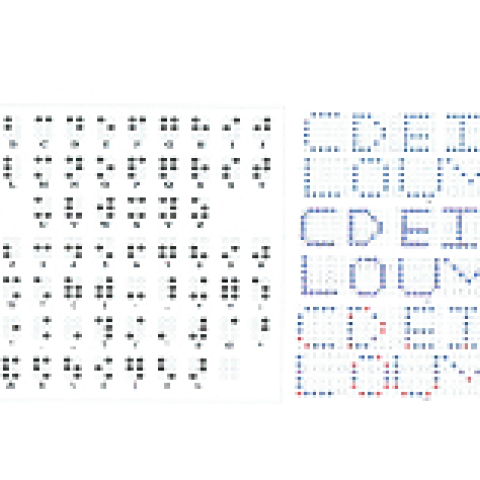Abstract
Abstract:
Functional changes in visual cortex as a consequence of blindness are a major model for studying crossmodal neuroplasticity. A large body of previous work has shown that traditionally visual cortical regions activate in response to a wide range of nonvisual tasks. However, the underlying computations in the visual cortex, while often inferred to be similar for the blind and the sighted, have almost never been examined in detail. Here we used magnetoencephalography (MEG) and advanced multivariate pattern analysis to compare visual letter recognition with Braille reading. We presented blind and sighted volunteers with 10 single letters in random order while recording brain activity. Sighted subjects were presented with Roman visual letters while blind subjects were presented with Braille tactile letters. We used linear support vector machines to decode letter identity from MEG data. We found that the classification time course of letter recognition in the sighted group was generally faster, briefer, and more consistent than in blind subjects. We then used representational similarity analysis to compare how sighted and blind subjects represented letters both within and across groups. This analysis revealed high within-group correlations at ~200 ms for sighted and ~600 ms for blind subjects. Interestingly, correlations between groups at these respective time points were significantly positive, though an order of magnitude lower. In a control experiment, blind and sighted subjects listening to auditory spoken letters exhibited nearly identical classification time courses, suggesting that sensory processing differences, rather than inherent group differences, were the main contributors to these effects. The results suggest that blind and sighted letter reading may be largely driven by distinct processes, but that brain region recruited crossmodally may be performing some common underlying computations for analogous tasks, albeit along different time scales.

